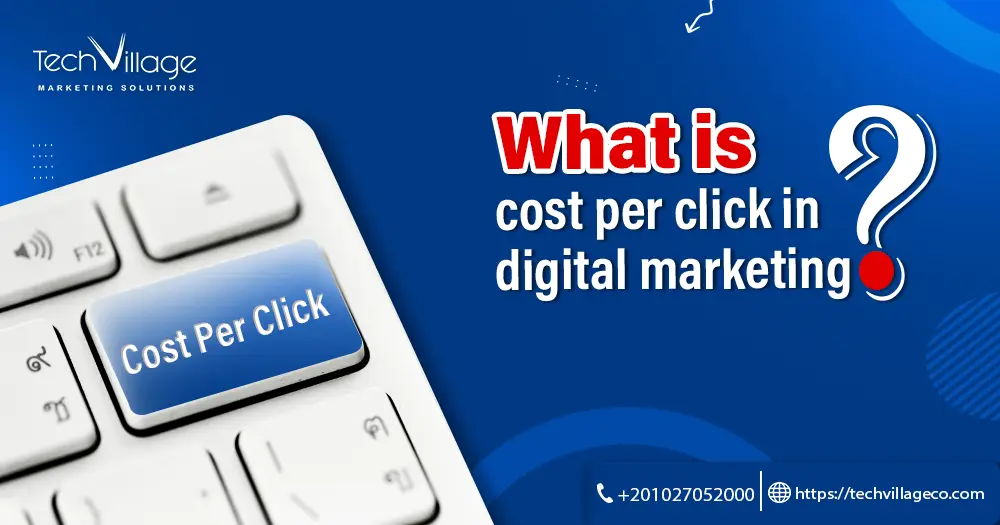What is cost per click in digital marketing. Cost Per Click (CPC), a fundamental metric in the realm of digital marketing, is the monetary value associated with one of the most coveted actions in the online advertising landscape: the click, In a world where businesses vie for the attention of internet users, CPC serves as the financial heartbeat of pay-per-click (PPC) advertising campaigns.
Understanding what is cost per click in digital marketing is akin to deciphering the currency of the digital marketing landscape, where advertisers pay a fee each time a user engages with their online ad through a click.
This click can lead users to explore websites, discover products, or perform desired actions, making CPC a pivotal element in measuring and optimizing the cost-effectiveness of digital advertising strategies.
Table of Contents
Togglewhat is cost per click in digital marketing?
If you wonder about what is cost per click in digital marketing here are the answers. Cost Per Click (CPC) is a common metric in digital marketing that represents the amount of money an advertiser pays each time a user clicks on their online advertisement. It is a pricing model used in online advertising platforms like Google Ads and Facebook Ads.
Advertisers bid on specific keywords or target audiences, and the CPC is determined through an auction system. The advertiser with the highest bid and the most relevant ad often gets their ad displayed, and they pay the amount of their bid when someone clicks on their ad.
Other additional information regarding what is cost per click in digital marketing. CPC can vary widely depending on factors such as the competitiveness of keywords, ad quality, industry, and the advertising platform being used. It’s an essential metric for advertisers to track because it directly impacts the cost-effectiveness of their digital marketing campaigns.
How Much Does a Click Cost in Digital Advertising?
And about what is cost per click in digital marketin. This process in digital advertising can vary significantly based on several factors. Some of the key factors that influence how much a click costs include:
1- Keyword Competitiveness: Highly competitive keywords, often associated with popular industries or products, tend to have higher CPCs because many advertisers are bidding on them.
2- Quality of the Ad: Search engines and advertising platforms consider the relevance and quality of your ad when determining CPC. High-quality, relevant ads may get preferential treatment and potentially lower CPCs.
3- Ad Placement: Where your ad appears on a search engine results page or a website can affect CPC. Ads in prime positions often have higher CPCs.
4- Industry: in addition to what is cost per click in digital marketing. The industry you’re advertising in can impact CPC. Some industries, like insurance or finance, typically have higher CPCs due to the competitive nature of the market.
5- Geographic Targeting: CPC can vary by location. Advertising in more competitive or affluent areas may result in higher CPCs.
6- Ad Scheduling: CPC can also fluctuate depending on the time of day or day of the week. Advertisers may pay more during peak times.
7- Quality Score: Ad platforms like Google Ads consider the quality and relevance of your landing page, ad text, and keywords. A higher-quality score can lead to lower CPCs.
8- Bid Strategy: Your bidding strategy, such as manual bidding or automated bidding, can impact CPC. Automated bidding strategies can optimize for cost-effectiveness.
9- Ad Format: Different ad formats, such as text ads, display ads, or video ads, can have varying CPCs.
Read also: Digital Marketing Content Ideas For Instagram.
How Cost Per Click (CPC) Is Calculated
In addition to what is cost per click in digital marketing. Cost Per Click (CPC) is calculated based on the bidding system used in online advertising platforms like Google Ads, Bing Ads, and others. The formula for calculating CPC is straightforward:
As Cost Per Click (CPC) is divided into two parts:
- Total Cost of Clicks: This is the total amount of money you’ve spent on your advertising campaign for a specific period. It’s the cumulative cost of all clicks generated by your ads during that time.
- Total Number of Clicks: This is the total count of clicks your ads received within the same specific period. Each time a user clicks on your ad, it contributes to this count.
- Once you have these two figures, you can calculate the CPC by dividing the total cost of clicks by the total number of clicks. This calculation gives you the average amount you’ve paid for each click on your advertisement.
For example, if you spent $100 on your ad campaign, and your ads received 200 clicks during that time, your CPC would be:
- CPC = $100 / 200 clicks = $0.50 per click
- In this example, your Cost Per Click (CPC) would be $0.50.
Here’s: What Is Impression In Digital Marketing?
Evaluating the Benefits and Drawbacks of CPC Advertising
According to tech village about What is cost per click in digital marketing. CPC (Cost Per Click) advertising, like any marketing strategy, comes with its own set of benefits and drawbacks. The advantages and disadvantages can be summarized in the following points:
1- Benefits of CPC Advertising:
A- Cost Control:
- You only pay when someone clicks on your ad, allowing for precise budget management. This cost control is ideal for businesses with limited marketing budgets.
B- Targeted Advertising:
- You can target specific keywords, demographics, interests, and locations, ensuring your ads reach a relevant audience, which can lead to higher conversion rates.
C- Immediate Results:
- CPC ads can generate traffic and leads quickly, making them suitable for time-sensitive promotions or events.
D- Adaptability:
- You can make real-time adjustments to your campaigns, such as changing ad copy, keywords, or bidding strategies, based on performance data.
E- Brand Exposure:
- Even if users don’t click on your ad, they may still see your brand, increasing brand awareness and recognition.
F- Performance Tracking:
- CPC advertising platforms provide detailed performance metrics, such as click-through rates (CTR) and conversion rates, enabling you to measure the effectiveness of your campaigns.
2- Drawbacks of CPC Advertising:
A- Costs Can Add Up:
- While you have control over your budget, the cost of clicks can accumulate, especially in competitive industries, potentially leading to high advertising expenses.
B- Click Fraud:
- Some instances of fraudulent or invalid clicks can inflate costs without delivering genuine leads or conversions.
C- Competition:
- In addition to what is cost per click in digital marketing. In highly competitive industries, CPC bids can become expensive, making it challenging for smaller businesses to compete effectively.
D- Learning Curve:
- Effectively managing CPC campaigns requires knowledge of keyword research, ad creation, and campaign optimization, which can have a learning curve.
E- Limited Long-Term Value:
- CPC advertising primarily focuses on immediate results. It may not build long-term relationships with customers as effectively as other marketing strategies like content marketing or email marketing.
F- Ad Blocking:
- Some users employ ad blockers, which can prevent your CPC ads from reaching your intended audience.
G- Short-Term Focus:
- CPC campaigns often prioritize short-term goals, such as clicks and immediate conversions, and may not nurture leads over an extended sales cycle.
Get to know: What Is Google Trends In Digital Marketing?
The difference between CPC vs CPM?
And about What is cost per click in digital marketing. CPC (Cost Per Click) and CPM (Cost Per Mille) are two common pricing models used in digital advertising, and they represent different ways of measuring and paying for ad impressions. Here’s the key difference between CPC and CPM:
1- CPC (Cost Per Click):
- Definition: In the CPC model, advertisers pay for each click their ad receives. You are charged only when a user clicks on your ad and is directed to your website or landing page.
- Billing: Advertisers are billed based on the number of clicks their ads generate.
- Best Used For: in addition to what is cost per click in digital marketing. CPC is ideal for campaigns focused on direct response and action, such as lead generation, website traffic, or conversions. It’s performance-driven and allows you to pay for actual user engagement.
2- CPM (Cost Per Mille):
- Definition: In the CPM model, advertisers pay for every 1,000 ad impressions, regardless of whether users click on the ad or not. An impression is counted each time your ad is displayed to a user.
- Billing: Advertisers are billed based on the number of times their ad is shown per thousand impressions.
- Best Used For: in addition to what is cost per click in digital marketing. CPM is often used for brand awareness and visibility campaigns. It’s suitable when the primary goal is to reach a broad audience and create brand recognition. Advertisers pay for ad exposure rather than user interactions.
Conclusion
In conclusion, We have explained in detail What is cost per click in digital marketing. Cost Per Click (CPC) stands as a cornerstone of digital marketing, representing not just a monetary transaction but a powerful indicator of engagement and interest from the digital audience.
As advertisers seek to navigate the dynamic landscape of online advertising, CPC serves as their compass, guiding budget allocation, strategy refinement, and the pursuit of favorable return on investment.
FAQ
What is cost-per-click in SEO?
Cost Per Click (CPC) is not a term typically associated with SEO (Search Engine Optimization). Instead, CPC is a metric used in pay-per-click (PPC) advertising, such as Google Ads, where advertisers pay a fee each time a user clicks on their ad. In PPC advertising, CPC represents the cost an advertiser incurs for each click on their paid advertisement.

 AR
AR





